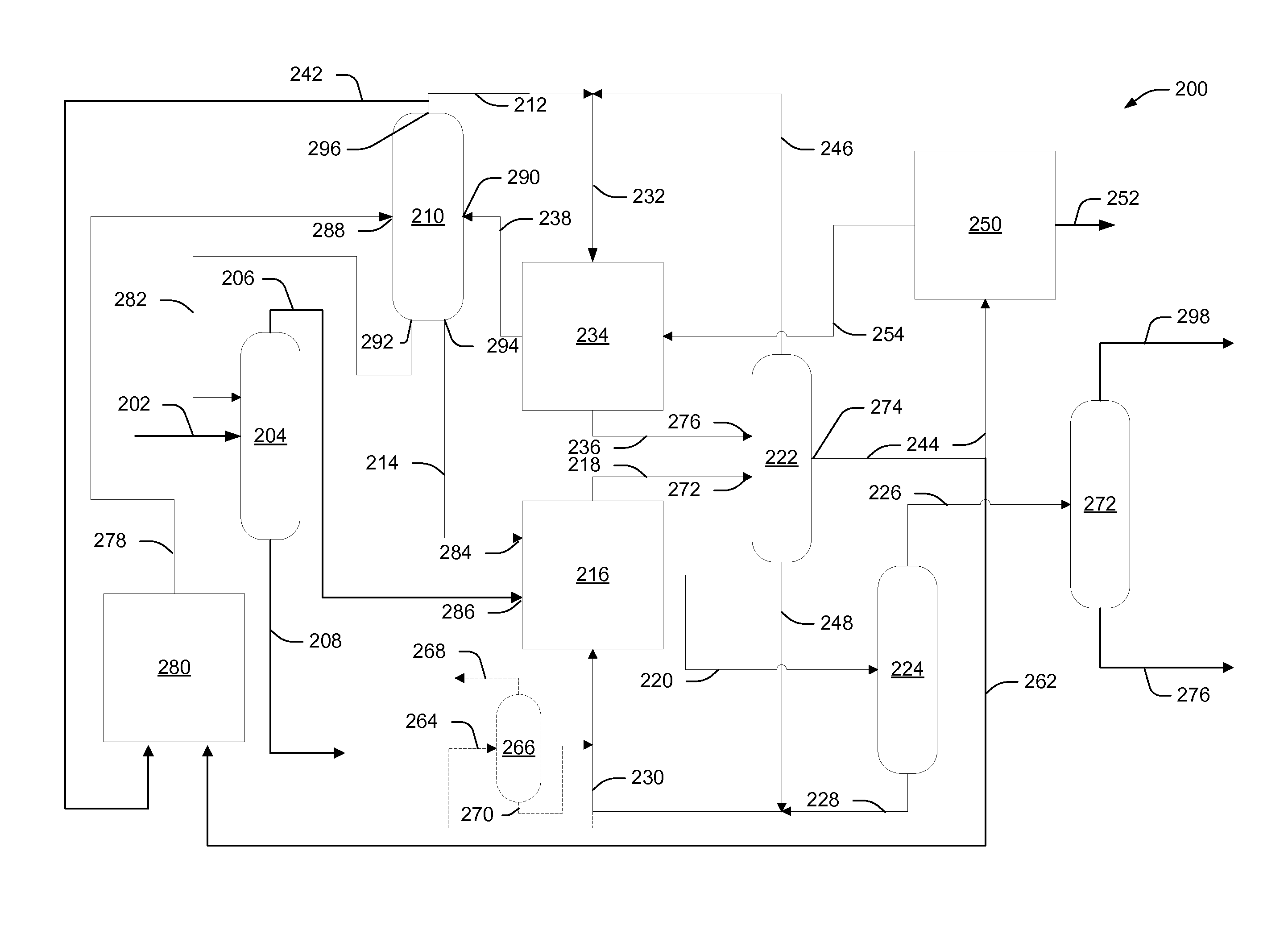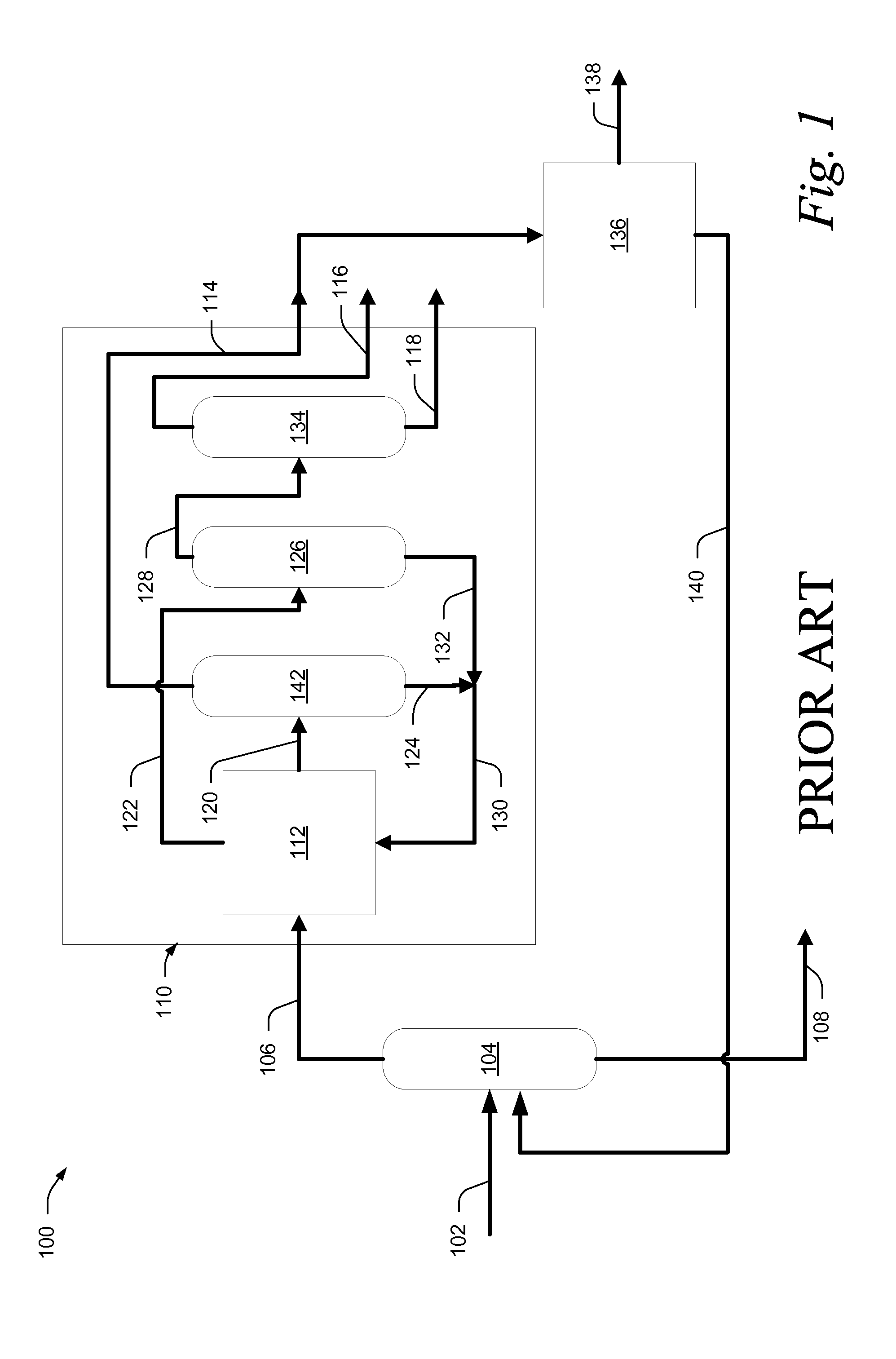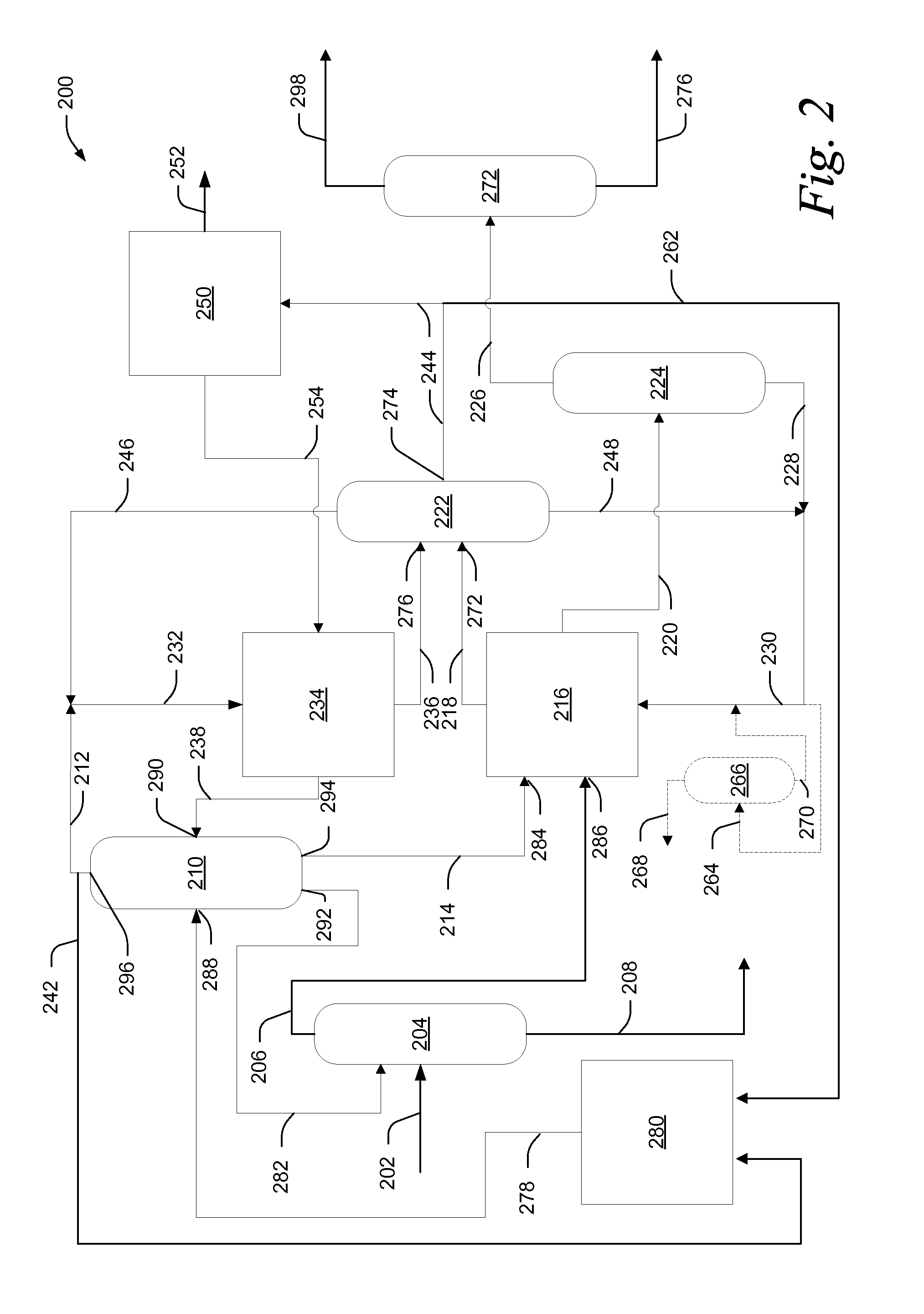Process and Apparatus for para-Xylene Production Using Multiple Adsorptive Separation Units and a Split Fractionating Column
a separation unit and separation column technology, applied in separation processes, filtration separation, multi-stage water/sewage treatment, etc., can solve the problems of energy cost and capital cost associated with such processes, separation requires a substantial amount of energy and associated costs, and the separation process is complex and laborious
- Summary
- Abstract
- Description
- Claims
- Application Information
AI Technical Summary
Benefits of technology
Problems solved by technology
Method used
Image
Examples
Embodiment Construction
[0013]Para-xylene is typically recovered from a mixed aromatic hydrocarbon fraction derived from various sources such as catalytic reforming by liquid-liquid extraction and / or fractional distillation. The para-xylene is commercially separated from a feed stream that typically contains all three xylene isomers, namely ortho-xylene, meta-xylene, and para-xylene. The para-xylene, or other desired isomer, is separated by either fractional crystallization or adsorptive separation or a combination of these two techniques. Adsorptive separation is generally preferred as it has a significantly higher single pass recovery (˜97%) relative to crystallization separation (˜65%).
[0014]A typical adsorptive separation process first involves the separation of C8 aromatic hydrocarbons, including ortho-xylene, meta-xylene, para-xylene, and ethylbenzene, from heavier aromatic hydrocarbons (i.e., C9+) and non-aromatic hydrocarbons through fractional distillation.
[0015]Those skilled in the art will appre...
PUM
| Property | Measurement | Unit |
|---|---|---|
| Concentration | aaaaa | aaaaa |
| Height | aaaaa | aaaaa |
Abstract
Description
Claims
Application Information
 Login to View More
Login to View More - R&D
- Intellectual Property
- Life Sciences
- Materials
- Tech Scout
- Unparalleled Data Quality
- Higher Quality Content
- 60% Fewer Hallucinations
Browse by: Latest US Patents, China's latest patents, Technical Efficacy Thesaurus, Application Domain, Technology Topic, Popular Technical Reports.
© 2025 PatSnap. All rights reserved.Legal|Privacy policy|Modern Slavery Act Transparency Statement|Sitemap|About US| Contact US: help@patsnap.com



